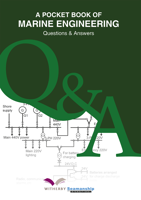Published: 2012
Author: Nigel Draffin
Bunker Fuel for Marine Engines – A Technical Introduction sheds light on the complicated relationship between ships’ engines and the marine fuels that power them and provides the reader with a solid introduction to a subject which every supplier or user of marine fuels would do well to understand.
In its foreword, the respected veteran bunker industry expert, Dr Rudy Kassinger – who spent well over half a century with Exxon and DNV Petroleum Services before branching out with his own consulting firm earlier this year – proclaims that Draffin ‘has written a comprehensive sequel to John Lamb’s seminal treatise Petroleum and its Combustion in Diesel Engines’ which was first Published: in December 1955, and long out of print, but ‘now has a worthy successor’. Fine praise indeed, from a fuels expert who has watched the subsequent 57 years of growth of the bunker fuel market from a few thousand tonnes to over 300 million tonnes a year, along with a dramatic growth in main and auxiliary diesel engines, vessel types and many other new pieces of kit.
According to Draffin, ‘a ship’s engine room is a place of refuge for engineers but a place of mysteries to most others’. He takes the reader on a technical tour around the equipment that will be found there, from main and auxiliary engines to generators, refrigerating plant and other fuel-using machines. For many readers, this highly illustrated book ‘is a chance to look underneath the hood and, perhaps for the first time, to recognise what makes this equipment work and why some fuel problems are more significant than others.’
Draffin takes the reader through the complete process of burning fuel onboard, from storage of fuel to dealing with the exhaust, before looking at the different types of diesel engine and their specific fuel requirements. He looks at gas turbines, fuel cells and developments in shore power, and covers boilers, fuel and accommodation heating and incinerators, before also looking at waste heat recovery systems.
Fuel types and bunker quality standards are, of course, laid out for the reader, as are blending, storage and onboard fuel treatment, where the work of separators, purifiers, clarifiers, decanters, homogenisers, filters and other engine room kit is explained.
Fuel heating, pumps, fuel measurement and storage are amply covered as are an engine’s sensitivity to fuel qualities. Importantly, the book looks at emissions and how they might be controlled, and also at unconventional fuels such as biodiesel, shale oil, liquefied and compressed natural gas, liquefied petroleum gas and even coal.



































